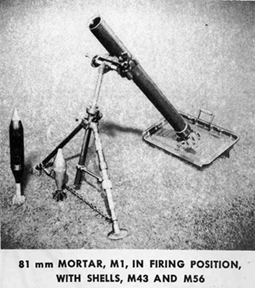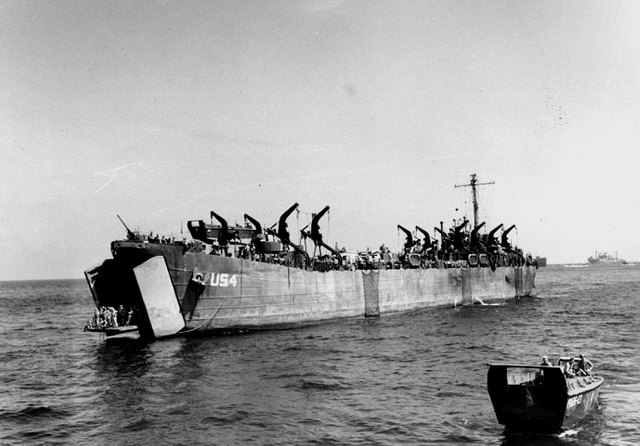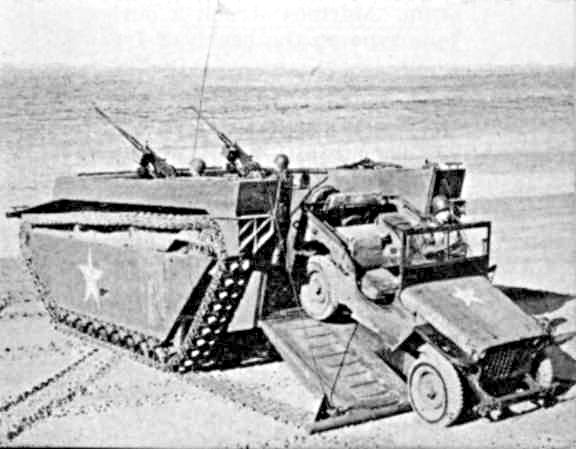Things you may have had questions about

The M1 81mm Mortar was a smoothbore, high-angle fire, muzzle loading weapon. The M1 81mm mortar was the largest weapon in the arsenal of the Marine infantry battalion. It provided the battalion commander with a powerful and flexible indirect fire capability. Four of these weapons were assigned to each battalion, in either the weapons or headquarters company, depending on the table of organization.
Sometimes called "infantry artillery," or "hip pocket artillery," mortars were capable of quickly laying down heavy barrages. These could stop enemy attacks under the worst conditions. Able to fire at high angles, mortars could fire at targets in defilade, either under direction of an forward observer, or firing off map coordinates. In the Pacific campaigns, these weapons became an important part of the battalion's firepower, especially since they could be man-packed into positions that were inaccessible to artillery.

On July 10, 1943, the invasion of Sicily began with an assault by four U. S. Army Divisions, four British divisions and a Canadian division. Soldiers, equipment and supplies were transported to the island by a force of 3,200 ships and craft, including a new type of amphibious ship, the Landing Ship Tank, commonly referred to as an "LST." Its maximum speed of 11.5 knots also produced the nicknames "Large Slow Target" or "Large Stationary Target" by the soldiers. The invasion of Sicily was the first large scale use of LSTs in a joint operations amphibious landing in the European-African-Middle Eastern Theater of Operations.
Its design and construction had been a joint operation. It was designed at a British-American conference in November 1941. America built all of the vessels for both countries. The first keel was laid down on June 10, 1942 and by the end of World War II, 1,051 of the vessels had been built. LSTs enabled assault troops to avoid heavily defended ports and to land wherever there was a suitable beach.
The LST was specifically designed to land vehicles. It was 328 feet long, and could carry armored vehicles in the tank deck and non armored vehicles on the main deck. The cargo capacity was 2,100 tons and approximately 200 soldiers. Its heart was the Tank Deck-a space 230 feet long by thirty feet wide by twelve feet tall. Once it arrived at a beach, the massive bow doors opened and the vehicles drove off ready for combat.




